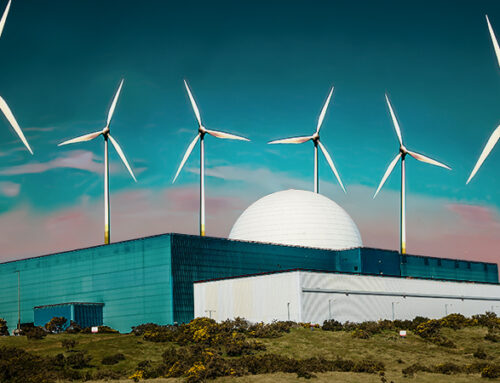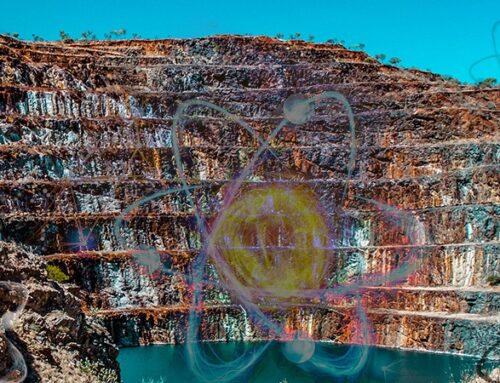Regular readers will know that I am no fan of EDF’s third generation nuclear technology being deployed at Hinkley Point C – the European Pressurised Water Reactor (“EPR”). The company has been trying and failing to complete its flagship reactors at Flamanville and Olkiluoto with both schemes a decade late and something around three times over budget, and although two EPRs were completed at Taishan in China, the lack of transparency around costs and performance means they are rarely held up as genuine proofs of concept.
In my recent post about the troubles with the aging British nuclear fleet, there was some discussion about safety concerns at Taishan, and today has come an announcement that the plant has closed for urgent maintenance.
What is the problem at Taishan?
In mid-June reports began to emerge of a potential “imminent radiological event” at the Taishan Nuclear Power Plant in Guangdong Province, 80 miles from Hong Kong. Framatome, a subsidiary of EDF which holds a 30% stake in the plant had apparently informed US authorities on 8 June of a potential problem with a build-up of noble gases in the primary circuit of Taishan unit 1. The reason for the notification was that Framatome needed a US waiver in order to obtain the technical information required to solve the problem.
 Responding to media reports of a leak at the plant China General Nuclear (“CGN”) announced on 13 June that Taishan 1 was operating at full power and there had been no release of radiation. However, Chinese safety authorities were reportedly raising the acceptable limits for radiation detection outside the plant in order to avoid having to shut it down, and did not publicly address the issue until 16 June.
Responding to media reports of a leak at the plant China General Nuclear (“CGN”) announced on 13 June that Taishan 1 was operating at full power and there had been no release of radiation. However, Chinese safety authorities were reportedly raising the acceptable limits for radiation detection outside the plant in order to avoid having to shut it down, and did not publicly address the issue until 16 June.
The build-up of inert gases in the plant apparently occurred due to issues with the casing around some of the fuel rods, the first of three containment barriers at the reactor. On 16 June, China’s National Nuclear Safety Administration (“NNSA”) confirmed that the increase in the concentration of noble gases in the primary circuit was related to a few damaged fuel rods, stating that the plants performance was still in accordance with the requirements of its operating technical specifications. EDF announced the following day that this is “a known phenomenon, studied and provided for in the reactor operating procedures”.
“Due to the influence of uncontrollable factors such as fuel manufacturing, transportation, loading, etc, a small amount of fuel rod damage during the operation of nuclear power plants is unavoidable, which is a common phenomenon. According to relevant data, many nuclear power plants around the world have experienced fuel rod damage and have continued operating. Within the scope of allowing stable operation and meeting the requirements of technical specifications, the operational safety of nuclear power plants is guaranteed,”
– NNSA spokesman
The NNSA estimates that of more than 60,000 fuel rods in the core of Taishan 1, about five probably have damage to their cladding, less than 0.01% of the total, and much lower than the maximum allowable damage to the fuel assembly of 0.25%. Nuclear fuel operates in a harsh environment in which high temperatures, chemical corrosion, radiation damage and physical stresses can undermine the integrity of the assembly.
The life of a fuel assembly in a reactor core is regulated to a burn-up level at which the risk of its failure remains low. Fuel “failure” in this context means a situation when the cladding has been breached, and radioactive material leaks from the fuel ceramic (pellet) into the reactor coolant water. The radioactive materials most likely leak through a cladding breach into the reactor coolant are fission-product gases and volatile elements, notably krypton, xenon, iodine and caesium.

Such fuel leaks do not present a significant risk to plant safety, although they can have a big impact on reactor operations and hence plant economics. Primary coolant water is continuously monitored so that any leak is quickly detected, and the permitted levels of released radioactivity are strictly regulated. The industry as a whole has made significant performance improvements in this respect, reducing fuel failure rates by about 60% in the 20 years to 2006 to an average of some 14 leaks per million rods loaded, according to the International Atomic Energy Agency.
An NNSA spokesman said that the increase in the level of radioactivity in the Taishan primary circuit is completely different from a radiological leakage accident:
“The primary circuit is inside the reactor containment. As long as the pressure boundary of the reactor coolant system as a radioactive containment barrier and the containment tightness meet the requirements, there is no possibility of radioactivity leaking to the environment.”
He also dismissed the reports that it had approved an increase in the acceptable limit of radiation detection outside the plant in order for it to continue operating, saying the regulator would continue to closely monitor the radioactivity level of the primary circuit of Taishan 1, strengthen on-site supervision and environmental monitoring; guide and supervise the operating units to take measures to strictly control the radioactivity level of the primary circuit, and strictly abide by the operation technical specifications to ensure that unit 1 runs safely.
However, last week EDF said it would have shut down the reactor if the facility were in France but that the decision to continue operating the plant was beyond its control.
“On the basis of the analyses carried out, EDF’s operating procedures for the French nuclear fleet would lead EDF, in France, to shut down the reactor in order to accurately assess the situation in progress and stop its development. In Taishan, the corresponding decisions belong to TNPJVC [Taishan Nuclear Power Joint Venture Co],”
– EDF
EDF said it had been allowed to analyse data related to the “detection of unsealed assembly rods in reactor No 1 of the Taishan power plant” and that the data made available by CGN suggested the “radiochemical parameters” were still below regulatory thresholds in China, which were “consistent with international practices”. The company sought to play down the problem after a CNN report in June suggested the risk of a radiation leak, stating that a leak outside the facility is not a danger and the build-up of noble gases had been contained. A spokesperson for EDF told the FT last Thursday that the primary concern was to begin maintenance to resolve the issue:
“We want to prevent the fuel rods from deteriorating further, carry out investigations to figure out why the fuel rods lost their sealings, and we want the necessary maintenance to be as simple as possible. This is not an emergency or an incident. It is a situation, that is covered by operating procedures, that is known and understood.”
An extraordinary board meeting was held by the Taishan stakeholders last Thursday to review the latest data relating to the problem, and today it has been announced that the plant has now been shut down for maintenance to be carried out.
Role of China in British nuclear power
Separately from the problems at Taishan, there have been reports this week that the British Government is increasingly uneasy about the role of the Chinese in the British nuclear power sector. This follows the ban on equipment from Chinese telecoms manufacturer Huawei in the UK’s 5G network due in part to the impact of the National Intelligence Law in China which forces companies to comply with state intelligence work.
Aside from concerns the Government has over China’s current actions in Hong Kong and allegations of human rights abuse in Xinjiang, there is a growing concern over China’s involvement in strategic infrastructure when private companies can be compelled to hand over information about their activities in other countries.
Any decision to limit the role of Chinese companies in British nuclear power would affect the proposed second EPR at Sizewell C, and a new plant at Bradwell-on-Sea using Chinese nuclear technology (the Hualong One HPR1000 reactor) which is currently going through regulatory approvals process with a decision expected in the second quarter of next year.
The FT has reported this week that CGN “is likely” to walk away from the Hinkley Point C if the company is forced out of future projects in the UK. One nuclear industry executive reportedly warned that CGN could also reassess its involvement with Hinkley Point, pointing out there are four interlinked agreements between CGN, EDF and the government dating to 2015: Hinkley Point, Sizewell, Bradwell and the pursuit of regulatory approval for China’s reactor design, saying:
“Neither EDF nor the government can assume they can just deal with Sizewell in isolation. If you open one agreement then you potentially open all four. Legally, you open one part of the agreement, you run the risk of opening all parts of the agreement.”
But even without the emergence of geopolitical concerns, there are doubts over the economic viability of Sizewell C after HPC’s budget has soared from £14 billion to as much as £22.5 billion, risking its profitability. EDF’s final investment decision on HPC was marginal with one board member resigning over the issue so if CGN is barred from future projects and with HPC looking less attractive, the company may well be glad of an excuse to walk away.
Ministers would reportedly prefer a situation where CGN was replaced as a minority investor in Sizewell, but the deteriorating economics at HPC together with the ongoing problems with the EPR technology more broadly might make finding a new investor difficult.
In addition to strategic concerns, there are also worries around the lack of transparency from Chinese authorities. It took time for the details of the Taishan issue to be made public, and had the plant been wholly-owned by the Chinese, it’s doubtful that the situation would ever have entered the public domain, a situation reminiscent of the early days of the Chernobyl disaster where the Communist regime was slow to inform the public of the unfolding tragedy.
The language from EDF reported in the FT was also concerning, with its references to EDF having been “permitted” to inspect certain data which had been “made available”. This suggests that despite having a 30% stake in the plant, and partnering with CGN on its UK EPRs, EDF does not routinely have access to plant performance data at Taishan. If that is the case then it means that EDF is not able to benefit from any operational experience relating to what is an otherwise unproven technology, which does not bode well for its troubled European projects.
Unsurprisingly, none of this makes me more supportive of the EPR technology, and while I continue to believe that large-scale nuclear is essential to the British energy mix, I believe the most effective route would be to support the Wylfa Newydd ABWR scheme instead.






It would be interesting to hear what your concerns are over these reactors (or point to a relevant part of your site).
I have heard people complaining about the danger of sodium but neglecting the fact that water at higher temperatures is very corrosive indeed. (And molten lead is corrosive too)
It seems that inert gases (as coolants) have many advantages with respect to corrosion (though some are more inert than others). I saw an article about the AGRs which mentioned then water corrosion worry.
And given recent government suggestions about high temperature (gas) reactors; I think this implies that gas turbines (and compressors) will be required…(and is Rolls-Royce going to be involved with this ?)
I don’t have direct safety concerns – I’m not a nuclear engineer and can’t sensibly comment on the relative merits of different approaches from a pure safety perspective. My concerns are commercial – EDF has spent more than a decade trying to get Olkiluoto and Flamanville built and they are both massively delayed and hugely over budget. On top of that, at Flamanville, EDF keeps running up against the ASN with issues around the steel quality (relating to a large-scale fraud by its suppliers described here: https://watt-logic.com/2016/11/25/french-nuclear-problem/) and the standard of its welding.
EDF had a long hiatus between it’s last new reactors and the EPR and lost a lot of skills over that time. And the EPR is significantly different from EDF’s second generation reactors. One of the reasons I prefer the ABWR is that it was a smaller technology jump from earlier reactors and has already been successfully delivered on time and on budget, with decent operational stats before the forced Fukushima-related shutdowns.
I wrote about the issues with the UK’s AGRs (cracking in the graphite cores) here: https://watt-logic.com/2021/06/15/falling-nuclear-capacity/
And the NAO was pretty scathing about HPC here: https://watt-logic.com/2017/06/30/new-nuclear/
Meanwhile Anne Marie Trevelyan is heading off in a completely different direction, or is it half a dozen different ones at once? She should read your briefing, which looks spot on to me.
https://tallbloke.wordpress.com/2021/07/29/uk-government-proposes-trials-of-high-temperature-gas-reactors/
If I might offer a correction to one of the statements in your article on UK nuclear history and falling capacity, cited above, no-one ever suggested that Calder Hall electricity would be too cheap to meter. In fact it was explicitly recognised that the UK first generation civil nuclear plant (Magnox) would be more expensive than current coal fired generation. Part of the justification for civil Magnox was that UK industrial recovery was limited by generating capacity, and that there was insufficient manpower to expand coal mining. Wikipedia has a reasonable article on “Too cheap to meter”.
This was my source for the comment, which suggests that the claims were made in relation to Calder Hall itself: https://www.ice.org.uk/what-is-civil-engineering/what-do-civil-engineers-do/calder-hall-nuclear-power-station
For some reason the link in my post wasn’t working so I’ve updated it.
Lewis L. Strauss, chairman of the U.S. Atomic Energy Commission coined the expression in 1954, the year after work started on Calder Hall…I can well imagine that someone could have jumped on the remark in the context of the world’s first commercial nuclear plant, but it could also be apocrypal and the Institution of Civil Engineers could have mis-attributed it.
Too cheap to meter was a throwaway cimment – like ‘net zere’ – that was made about fusion power, not fission
The type of technology used to deploy the next generation of nuclear power is less important than the cost.
In principle all technologies work well enough – the devil is in the detail.
For example the current development of parallel SMRs (Small modular reactors) keep nuclear engineering innovation to the minimum: the goal is to achieve cost savings and rapid deployment by two main approaches:
The first approach is to make the reactor passive-safe under SCRAM conditions. This turns out to be a matter of size. A smaller reactor can lose its decay heat with passive cooling – it needs no emergency pumps. At a stroke layers of safety equipment are simply not needed.
The second approach is to make the reactor small enough to be manufactired in toto in a factory from where it can be shipped more or less complete to its installation site: This has the advantage that it can be manufactured to a consistent quality and type approved. This cuts down huge amounts of construction and approval time, getting deployed capital into productive generation far more quickly.
Multiple units can be assembled on pre=prepared sites to acheive any specific power output needed
I think there are at least three consortia engaged globally in small reactors – the UK one is headed up by Rolls Royce who have considerable experience in small PWRs for submarine power unit use, as well as being extremely experienced in gas turbine power stations via modified jet engines, and also nuclear power station control systems.
The challenge is not nuclear engineering – it is in terms of production engineering and what might be called political engineering – manufacturing to meet the red tape!
That’s right – my comments on technology relate to large-scale reactors, where I think the jump to EPR from previous technologies, along with the greater risk-aversion after Fukushima has created the current mess with European EPR projects all running late and over-budget.
On SMRs the main challenge is funding the first fabs. My understanding is that the capital costs involves are in the low £ billions which is why these things aren’t already up and running – they’re at the limit of what can be funded privately, particularly when there is no proof of concept.
This is why it’s so disappointing that the UK Government has committed only c £500 million to nuclear power in the 10-point plan…it’s not enough for either large-nukes or SMRs. £500 million of new money pointed towards SMRs on the other hand might be enough to get the initial production facilities funded.
If I held the purse-strings, I would be signing up Wylfa-Newydd as we need to replace the closing AGRs, and ABWRs are a more established technology. I would also stump up for SMRs to get to proof of concept and hopefully beyond. I would not commit anything more to EPRs until there is some track record of them working in Europe which won’t be any time soon.
The government seems to identified HTGR (High Temperature Gas Reactors) https://assets.publishing.service.gov.uk/government/uploads/system/uploads/attachment_data/file/1008813/advanced-modular-reactors-demo-call-for-evidence.pdf and are asking for comments.
The use of inert gases (helium, primary, and nitrogen coolants, in a case from China) allows for high temperatures (thus allowing for combined cycle gas turbines). This is a step up from the UK AGRs (which some consider HTGR) and eradicates many of the material issues (such as the corrosion of high temperature steam or molten lead or molten salts) and allows the use of off-shelf (cheap) gas turbines. How much this can be regarded as using UK experience in CO2 cooled (nearly) HTGR but it does illustrate moving to high temperatures might simplify and allow the use of well established combined cycle gas turbine technology. I await seeing what the designs include (eg integrated energy storage modules could improve them – and construction economics)
Thanks for the link – it will be interesting to see how this develops.